- Home
- J. T. Edson
Waco 7: Hound Dog Man (A Waco Western)
Waco 7: Hound Dog Man (A Waco Western) Read online
The Home of Great Western Fiction!
Out in Wyoming it took a brave man–or a fool – to tangle with a cougar. In a land where men faced death readily, where lead flew with deadly accuracy, the speed and power of the cougar, or mountain lion, were to be respected and feared.
If a cougar or an old grizzly was prowling around, there was only one thing to do – send for Scobie Dale, the man with the specialized knowledge and equipment which most ranchers lacked, the man they called the hound dog man.
WACO 7: HOUND DOG MAN
By J. T. Edson
First published by Brown Watson Ltd in 1967
Copyright © 1979, 2018 by J. T. Edson
First Kindle Edition: March 2017
Names, characters and incidents in this book are fictional, and any resemblance to actual events, locales, organizations, or persons living or dead is purely coincidental.
All rights reserved. No part of this book may be reproduced or transmitted in any form or by any means, electronic or mechanical, including photocopying, recording or by any information or storage and retrieval system, without the written permission of the author, except where permitted by law.
This is a Piccadilly Publishing Book
Series Editor: Mike Stotter
Text © Piccadilly Publishing
Published by Arrangement with the Author’s Agent.
For ‘Doc’ Sherman, George Hallam, Eddie Hardman, ‘Fingers’ Lomas, Jim Anstey and all other Army dog men.
Table of Contents
One – No Chore for an Amateur
Two – I Never Needed More Than One
Three – So You’re Working for Him
Four – An Error of Ignorance
Five – Reckon You Told the Truth
Six – A Bad Time to Give Birth
Seven – A Hard Man to Convince
Eight – My Father Was a Hound Dog Man
Nine – The Wisdom of Not Carrying Identification
Ten – Paula’s Mistake
Eleven – Desborough Becomes a Point of Interest
Twelve – News of the Killer Bear
Thirteen – The Sign of the Bear Tree
Fourteen – Scobie’s Mistake
Fifteen – Miss Loxton’s Profession
Sixteen – Pauline’s Decision
About the Author
One – No Chore for an Amateur
With the spring sun warming its bones, the big Absaroka grizzly bear felt a need for more substantial food than the grasses, sedges, roots and sprouting buds which had been all its stomach could take on emerging from its semi-hibernation. All through the frost, snow and storms of the winter, the bear slept secure in a snug hole beneath a deadfall of logs high in the Eastern Wyoming mountains. Hungry wolves found the den-hole, but did no more than pause, sniff around it and then lope on bristling their fear and hate of the animal inside. Even carcajou, the wolverine, fearless hunter and killer though it could be, ignored what might appear to offer an easy meal. Despite its other name, glutton, the wolverine knew better than enter the den of a sleeping male grizzly bear; undisputed master of the Wyoming high country.
Standing with one forefoot on a fallen, rotten log, the bear looked out over the rolling forest-covered slopes of its kingdom. With a body length of some eight foot and shoulder height of a good forty-eight inches, the bear had seven hundred and fifty pounds of well-equipped power to enforce its desires. Belonging to the Big-Toothed sub-species of Ursus Horribilis, its well muscled jaws carried long canine teeth and powerful crushing molars designed for a carnivorous diet. Long yellowish-brown hair hid the winter-gaunt state of its body and gave it an appearance of even greater bulk. Steel-hard, sharp and long claws projected from its feet pads, weapons of murderous efficiency which exceeded its powerful mouth. All in all, the grizzly gave the impression of being what it was, the most dangerous animal oh the American continent.
A powerful blow from one paw burst open the log as if a charge of dynamite exploded inside it. Grubs and insects exposed by the blow wriggled frantically in an effort at escaping from the hated daylight. Lowering its head, the bear licked up the insect life with its tongue. Such minute morsels could not even start to appease the gnawing hunger.
Instinct, or maybe memory of other years, started the bear walking downhill. All the time as it moved, it foraged for food. Rolling over rocks, exploring bushes, it took anything which came its way, yet the hunger persisted. Rich and tempting to the bear’s nostrils came the scent of mule deer. However, long experience had taught the grizzly that only a sick or injured deer was likely to fall victim. So the bear wasted no time, but continued head downwards.
Out on the more open rolling land could be found a much easier prey, one a comparatively slow-moving bear might stalk and kill. While the bear could gallop at around thirty miles an hour, raising it to thirty-five during the short burst of a charge, mule deer, elk, or the pronghorn antelope of the open range were all capable of higher speeds. Not so the animal which the hungry bear sought.
On walked the grizzly in that seemingly slow, careless, but mile-eating way of its kind. Finding one of the trails it used upon other such forays into the low country, the bear ambled along it. At intervals along the trail it found a ‘bear’ tree. Halting, the grizzly reared up on its hind legs against the trunk and sniffed over the surface. No other bear had used the tree, as its nose showed, so the grizzly proceeded to mark a warning to others of its kind. Sinking its teeth into the bark as high as it could reach, the grizzly ripped out several chunks and dropped them on to the growing pile left by previous years’ markings. With proof of occupancy made, the bear continued its quest for food.
Towards noon, as it moved through budding blueberry bushes, the bear picked up the scent it sought. With surprising silence and stealth, considering its bulk, strength and clumsy build, the bear wended its way through the bushes, following the wind-born aroma. Approaching the edge of the bushes, the grizzly slowed down and crept forward inch by inch until it could see through to the open land beyond. There, not ten yards away, the animals it came down from the high country to seek stood grazing with a complete lack of caution.
In many ways the white-faced Hereford cattle proved superior to the Texas longhorn stock they fast replaced in the mid-1890s. They produced a better class of beef and more of it per animal, were more tractable, safer to handle, bred as well without supervision and generally showed a far higher profit margin. Yet in one major respect the whiteface could not even begin to compare with its predecessor. The longhorn had been at best only semi-domesticated, possessing all the wary alertness of a wild creature and a damned good defensive armament in the six to eight foot spread of sharp horns.
Grazing contentedly and in a heedless manner no longhorn ever adopted, the small bunch of Rocking D Herefords just asked for the trouble soon to come. One of the cows moved away from her companions, drawing ever closer to the blueberry bushes and the bear’s ambush position. Measuring the distance with its eyes, the bear held down an inclination to rush out. Age brought wisdom that refused to allow hunger pangs to cause a premature charge.
At last the moment came. With a coughing roar, the grizzly burst from the bushes as if they did not exist. Even then a longhorn might have escaped, or made a fight, but the whiteface lacked the speed for one and instinct for the other. Paralyzed by fear for a vital instant, the cow failed to react to the danger. Rearing up, the grizzly struck out with the paw that burst open the log. Bones snapped as the paw caught alongside the cow’s head and broke her neck. Even as her companions scattered in belated fright, the stricken cow collapsed to the ground.
Normally the bear would have dragged its kill into the
forest before feeding, covering it with debris when full and lying up close by to protect it from marauders. With winter-hunger tearing at its belly, the grizzly could not spare the time. Licking the blood which dripped from gashes tom by its claws, the bear put the final touch to its appetite. The powerful jaws closed on flesh and tore out a sizeable chunk. As the meat slid down its throat, the grizzly felt a warm satisfaction welling inside it. That first bite meant winter had gone and days of good feeding lay ahead. Overhead the first of the turkey vultures made its appearance, circling high in the sky and knowing better than drop while the grizzly fed.
Old Wilkie Wilkinson saw the circling vultures – for others soon gathered when the first located a possible meal – as he rode across the Rocking D’s range on his way to the town of Desborough. Being conscientious, he put aside thoughts of recreation until after investigating the cause of the birds’ gathering. After covering about a mile, he halted his horse on a rim and studied the cow’s body as it lay close to the blueberry bushes.
Even from where he sat, Wilkie could tell that a bear killed the cow. Not a black bear either, but a grizzly, or that broken neck lied. Although he could see no signs of the bear, Wilkie remained at a distance. A man did not ride the Western ranges for some thirty-five or more years without learning a few lessons, including the value of caution. He knew a damned sight better than approach a grizzly bear’s kill, even in the bear’s absence, when armed with only a Colt Peacemaker and Winchester Model 1866 carbine. Being of a conservative nature, he had never seen the need to waste money on the purchase of a more modem, powerful, center-fire rifle; although he admitted, if only to himself, that the old rim-fire ‘yellow boy’ had its limitations. Twenty-eight grains of black powder did not, to his mind, constitute adequate power when a man stood likely to tangle with a grizzly bear.
If Wilkie knew anything about grizzly bears, and he figured he did, the cow’s killer ought to be in the bushes sleeping, unless it was down on Trout Creek taking a drink. In either case, being jealous of its kill, it would charge out and attack any living creature which approached the cow. Not wishing to force the issue, Wilkie turned his horse and urged it at a better pace towards Desborough. Once a grizzly started killing stock, it formed the habit and must be stopped. Wilkie figured he knew the best way to accomplish the stopping.
An hour after finding the cow, Wilkie rode towards the John Barleycorn saloon on Desborough’s main – and only – street. The usual bunch of town loafers sat on the porch and all studied the old cowhand’s lathered horse with interest.
‘Is Daniels inside?’ he asked.
‘Went on over to Reiger’s place to test a batch of applejack,’ big, bulky and well-dressed Copson, the local butcher, replied. ‘You look like you’ve been pushing your horse some, Wilkie.’
‘Some,’ admitted Wilkie.
‘You got trouble?’ Copson inquired hopefully.
‘Depends on what you call trouble,’ countered the cowhand.
‘What kind do you have?’
‘A grizzly done took one of our cows out by Trout Creek.’
‘Where’s its hide?’ asked the butcher. ‘I’ll buy it off you.’
‘The boss owns the cow’s hide,’ Wilkie answered. ‘And last trail count the bear was still wearing his.’
Something about the burly butcher always put a burr under Wilkie’s saddle. The old cowhand never cared for Copson’s attitude of breezy friendliness, which always put him in mind of a city politician hand shaking for votes come election time. So he prepared to ride on in search of his boss at Reiger’s general store.
‘You mean you didn’t get the bear?’ demanded Copson, grinning at his cronies, then glancing back at Wilkie.
‘Well now, I sort of figured the bear might give me an argument about being got.’
A guffaw broke from Copson’s lips. ‘So now you’re here looking for your boss to help out?’
‘That’s about the size of it,’ admitted Wilkie. ‘I figure he’ll call in Scobie Dale.’
‘The hound dog man,’ grunted Copson. ‘Why bother with him? Reese here’s got a real good hound.’
‘Ain’t gainsaying his Lou bitch’s good – for running coon, or treeing a squirrel,’ replied Wilkie.
‘She’ll trail anything I lay her to,’ put in Reese, indignantly defending his newly purchased dog.
‘Never yet saw a red-bone’s’d go again’ a black bear – and that out there’s a grizzly less I miss my guess.’
‘So?’ snorted Copson.
‘Mister, a grizzly starts being mean where a black bear leaves off,’ Wilkie explained patiently. ‘And the red-bone’s never been whelped that’ll tangle with either of ’em.’
‘Then we’ll take my Vic dog along,’ the butcher stated. ‘I’ll fight anything that lives and breathes.’
‘Hunting a grizzly’s no chore for amateurs,’ Wilkie insisted, making the word come out as ‘hammer-chewers’. ‘I’ll go tell the boss.’
With that, Wilkie started his horse moving and rode on in the direction of the general store. Copson watched the old man go and let out a barking snort of annoyance. Never a man to be put off once he made up his mind, the butcher determined to hunt the bear.
‘Let’s get the dogs,’ he said, turning to his cronies.
None of the loafers, especially Reese, showed any enthusiasm at the idea. While living in the Wyoming range country, they were town-dwellers who rarely went beyond Desborough’s limits. Reese bought the red-bone, having her shipped in from the East, because he wished to enter the society of a group of prominent citizens whose prime interests in life centered on hunting and fishing. By owning a trained coonhound, he hoped to join the select group and gain numerous financial benefits from his acceptance. So he did not relish the idea of putting the dog on to a grizzly bear’s trail.
‘I can’t rightly go just now, Cop,’ Reese finally said.
‘Then we’ll borrow that Lou bitch and go without you,’ replied Copson, not easily put off. ‘Won’t we, boys?’
Suddenly all his companions started to remember other, more pressing business which prevented them from leaving town. Their refusal only served to strengthen the butcher’s intentions.
‘All right,’ he snapped. ‘I’ll go by myself – if you’ll loan me the bitch, Reese.’
For a moment Reese hesitated, then saw the tightening of the butcher’s lips and a warning glint coming to Copson’s eyes. Reese owed the butcher a fair sum of money, a loan the other kept like the sword of Damocles over his head, and was altogether in no position to refuse the request. Reluctantly he nodded his agreement and went along with Copson to hand over the dog.
At the store, Wilkie learned that his boss had gone along to a nearby stream to watch the local doctor try out a new trout-fly just arrived from the East, so followed Daniels to pass on his disturbing news.
After collecting the red-bone bitch, Copson went to his home and made ready for the trip. He saddled his horse, slid his Winchester Model 1876 carbine into the saddleboot and turned loose his own dog.
In a way, Copson’s dog Vic was just as much a status symbol – although the term had not yet come into use – as the red-bone hound. Copson did much business in the State capital. Cheyenne, and his eye on a seat in the Legislature. To improve his chances, he cultivated a sporting set of business and political men in the capital. The sports went in for such diversions – from a spectator angle – as boxing and wrestling, while indulging in cock and dogfights for added entertainment. To win membership into the select association, Copson kept a fighting dog of some ability. He figured the dog to be a match for anything that breathed and aimed to prove his point.
At thirty-eight pounds, Vic could have modelled for the ideal type of Bull Terrier bred in the Cradley Heath area of England for the purpose of fighting with others of its kind. Instead of being the somewhat leggy breed favored in the Walsall country, or the lighter, more terrier-like dog of the Darlaston district, Vic showed a bulldoggish appearance. Wit
h a short, deep, broad skull, its pronounced cheek muscles, short fore-face and level mouth telling of enormous, crushing power of bite, short, muscular neck, tremendous spring of ribs and depth of chest, the dog gave an immediate impression of controlled, deadly toughness. Vic walked in a mincing, springy manner, sharply tapered tail drooping like a pump handle, looking ready for anything.
Only Copson’s presence and unceasing watch prevented Vic from attacking the bitch, for a Staffordshire Bull Terrier trained for the fighting-pit lived only to try conclusions with other dogs. In fact, Copson finally solved his problem by hoisting Vic on to the horse’s saddle and keeping the dog there while the bitch trotted along at his side.
Spiraling turkey vultures guided Copson to the kill, as the first arrival had done with Wilkie; but the butcher failed to appreciate the significance of the birds still being in the air. Nor did he possess the old cowhand’s knowledge of other basic, but vitally important, aspects of hunting a grizzly bear. Instead of halting and studying the situation, Copson continued to ride forward and he even failed to draw the carbine.
The bitch loped ahead, making for the dead cow. At first, her tail wagged in anticipation of an interesting investigation. On reaching the cow, she caught the first warning whiff of the grizzly’s scent and her tail ceased to whip back and forwards. Instead a growl, which sounded three parts whine of fear, broke from her. Copson failed to read the warning signs and continued to ride forward.
Suddenly a deep, awesome roaring snarl shattered the air and the grizzly burst into sight to protect its kill. Throwing herself backwards, the bitch whirled and fled. No less shocked by the terrifying and unexpected sight, Copson’s horse reared on its hind legs. Man and Bull Terrier slid backwards over the horse’s rump to land on the ground, but where Copson lit down on his rump, Vic arrived feet first.
No other breed of dog equaled the Staffordshire Bull Terrier for gameness and Vic did not hesitate. Giving out a staccato, somewhat high-pitched bark characteristic of its breed – and sounding out of keeping with its pugnacious nature – the dog charged straight at the on-rushing bear. Such tactics might serve admirably in the fighting-pit against another dog, but failed miserably when tried on a full-grown male grizzly bear. Lurching upright, the bear swung its right fore leg with savage speed. Before the dog’s punishing, powerful jaws could close on flesh, it caught the full, shattering impact of the paw’s blow. The long claws tore into Vic’s body which had already been crushed by the impact and flung the dog through the air.

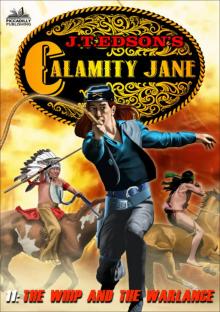 Calamity Jane 11
Calamity Jane 11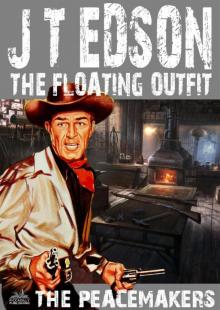 The Floating Outift 33
The Floating Outift 33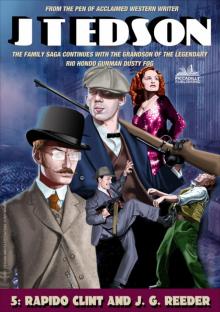 Cap Fog 5
Cap Fog 5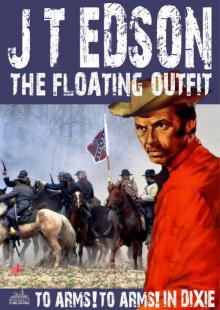 The Floating Outfit 34
The Floating Outfit 34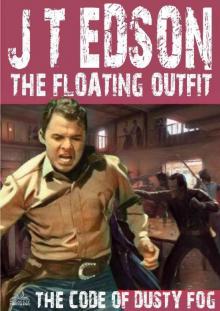 The Code of Dusty Fog
The Code of Dusty Fog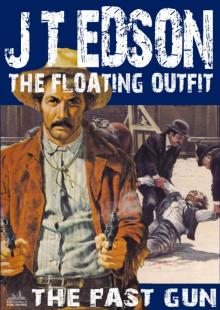 The Floating Outfit 21
The Floating Outfit 21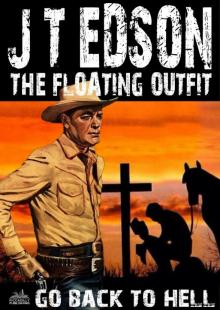 The Floating Outift 36
The Floating Outift 36 Calamity Jane 2
Calamity Jane 2 Calamity Jane 6: The Hide and Horn Saloon (A Calamity Jane Western)
Calamity Jane 6: The Hide and Horn Saloon (A Calamity Jane Western)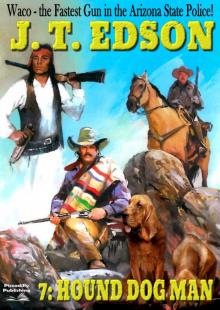 Waco 7
Waco 7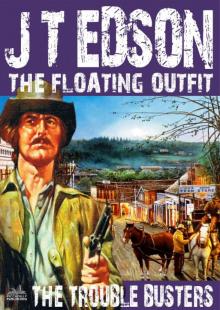 The Floating Outfit 25
The Floating Outfit 25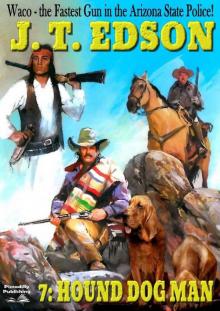 Waco 7: Hound Dog Man (A Waco Western)
Waco 7: Hound Dog Man (A Waco Western)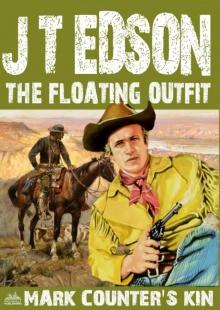 The Floating Outfit 47
The Floating Outfit 47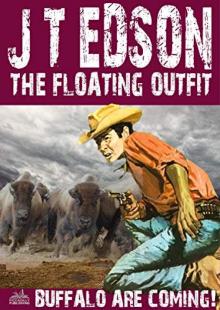 The Floating Outfit 42: Buffalo Are Coming!
The Floating Outfit 42: Buffalo Are Coming!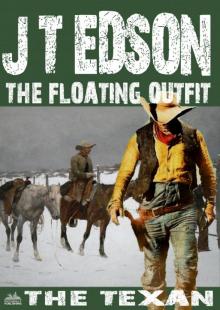 The Floating Outfit 46
The Floating Outfit 46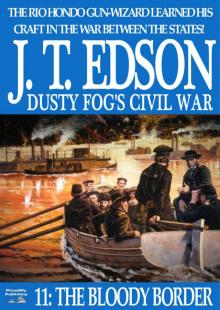 Dusty Fog's Civil War 11
Dusty Fog's Civil War 11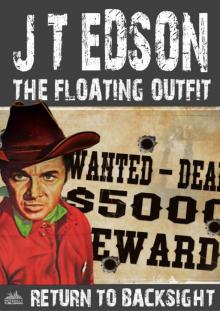 The Floating Outfit 61
The Floating Outfit 61 The Owlhoot
The Owlhoot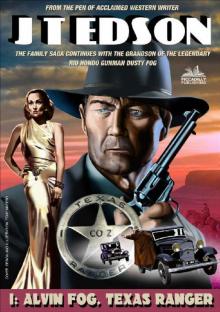 Alvin Fog, Texas Ranger
Alvin Fog, Texas Ranger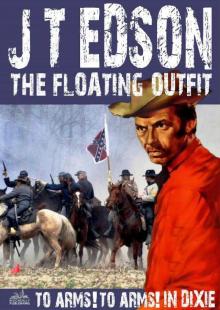 The Floating Outfit 34: To Arms! To Arms! In Dixie! (A Floating Outfit Western)
The Floating Outfit 34: To Arms! To Arms! In Dixie! (A Floating Outfit Western)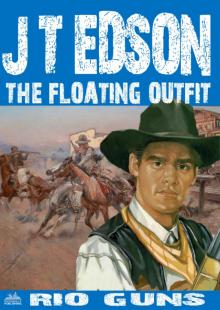 The Floating Outfit 44
The Floating Outfit 44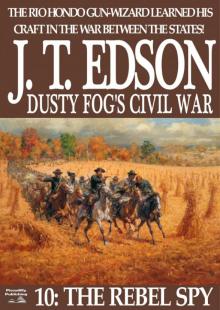 Dusty Fog's Civil War 10
Dusty Fog's Civil War 10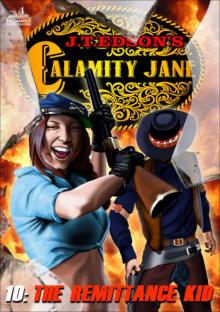 Calamity Jane 10
Calamity Jane 10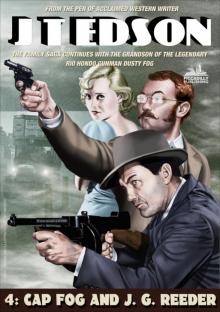 Cap Fog 4
Cap Fog 4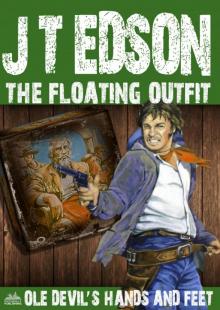 The Floating Outfit 51
The Floating Outfit 51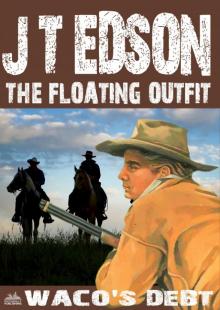 The Floating Outfit 50
The Floating Outfit 50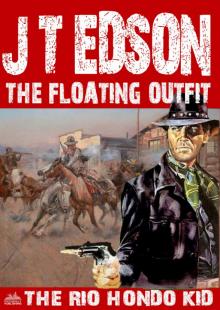 The Floating Outfit 49
The Floating Outfit 49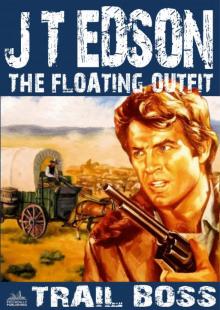 The Floating Outfit 10
The Floating Outfit 10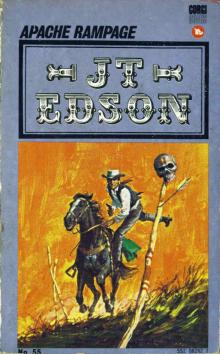 Apache Rampage
Apache Rampage The Floating Outfit 15
The Floating Outfit 15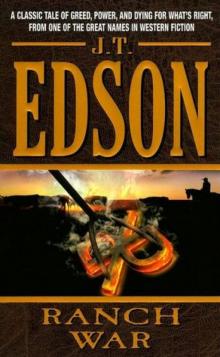 Ranch War
Ranch War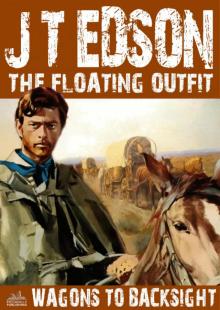 The Floating Outfit 11
The Floating Outfit 11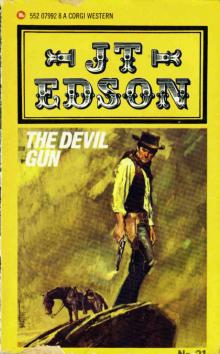 The Devil Gun
The Devil Gun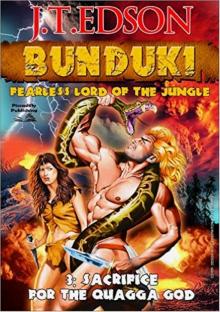 Sacrifice for the Quagga God (A Bunduki Jungle Adventure Book 3)
Sacrifice for the Quagga God (A Bunduki Jungle Adventure Book 3)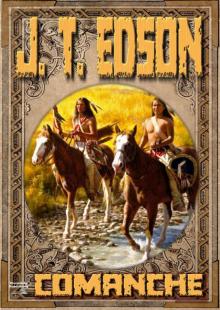 Comanche (A J.T. Edson Western Book 1)
Comanche (A J.T. Edson Western Book 1)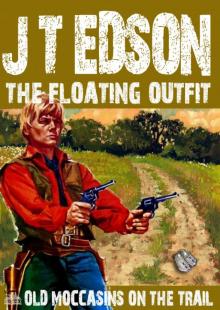 The Floating Outfit 48
The Floating Outfit 48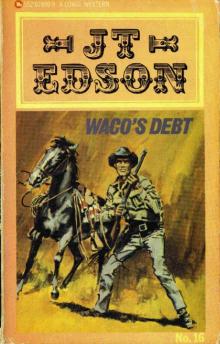 Wacos Debt
Wacos Debt The Rebel Spy
The Rebel Spy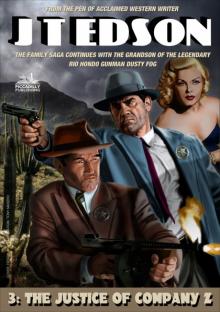 Cap Fog 3
Cap Fog 3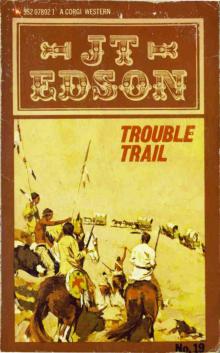 Trouble Trail
Trouble Trail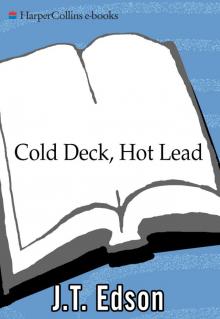 Cold Deck, Hot Lead
Cold Deck, Hot Lead Rockabye County 4
Rockabye County 4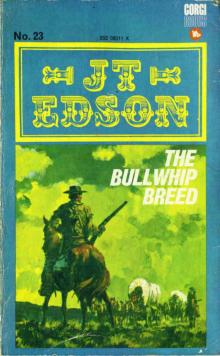 The Bullwhip Breed
The Bullwhip Breed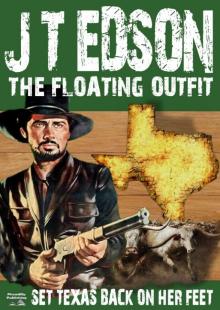 Set Texas Back On Her Feet (A Floating Outfit Western Book 6)
Set Texas Back On Her Feet (A Floating Outfit Western Book 6)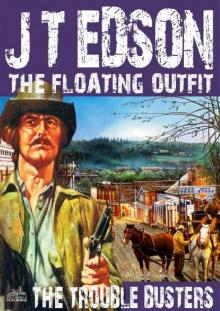 The Floating Outfit 25: The Trouble Busters (A Floating Outfit Western)
The Floating Outfit 25: The Trouble Busters (A Floating Outfit Western)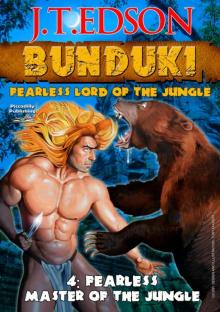 Fearless Master of the Jungle (A Bunduki Jungle Adventure
Fearless Master of the Jungle (A Bunduki Jungle Adventure Wanted! Belle Starr!
Wanted! Belle Starr!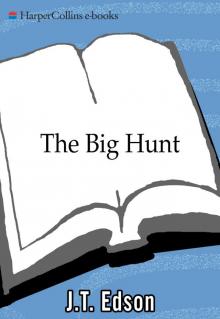 The Big Hunt
The Big Hunt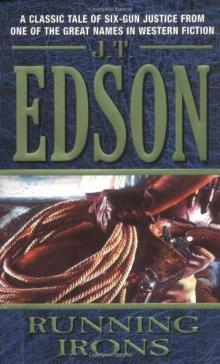 Running Irons
Running Irons The Floating Outfit 19
The Floating Outfit 19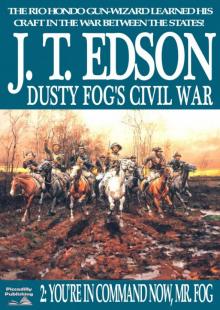 You're in Command Now, Mr Fog
You're in Command Now, Mr Fog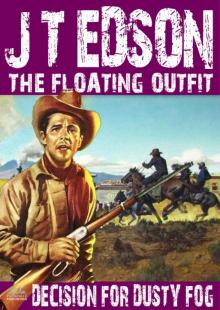 The Floating Outfit 27
The Floating Outfit 27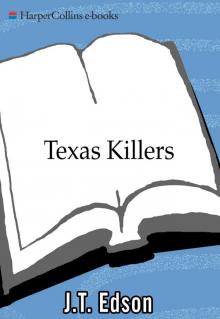 Texas Killers
Texas Killers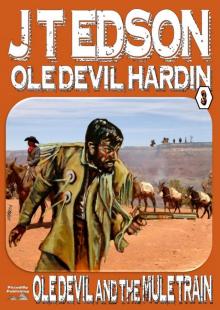 Ole Devil and the Mule Train (An Ole Devil Western Book 3)
Ole Devil and the Mule Train (An Ole Devil Western Book 3)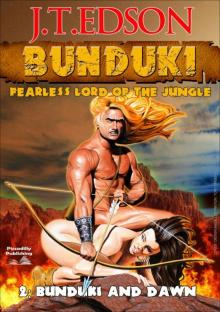 Bunduki and Dawn (A Bunduki Jungle Adventure Book 2)
Bunduki and Dawn (A Bunduki Jungle Adventure Book 2)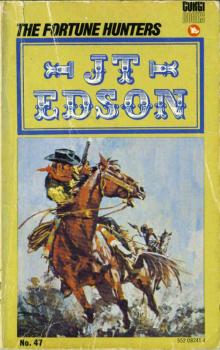 The Fortune Hunters
The Fortune Hunters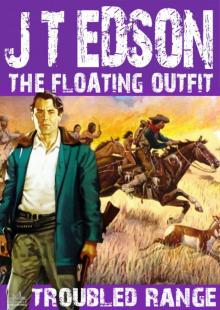 The Floating Outfit 12
The Floating Outfit 12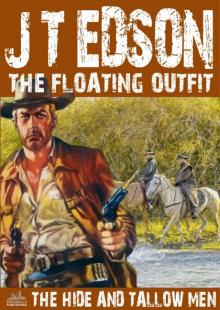 The Hide and Tallow Men (A Floating Outfit Western. Book 7)
The Hide and Tallow Men (A Floating Outfit Western. Book 7)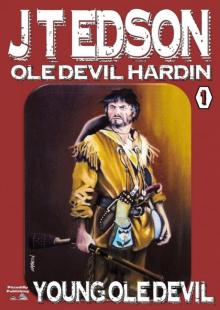 Young Ole Devil
Young Ole Devil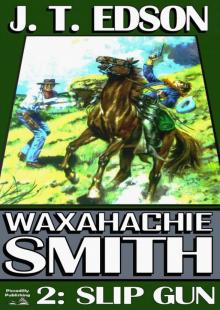 Slip Gun
Slip Gun The Drifter
The Drifter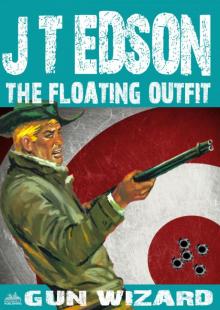 The Floating Outfit 45
The Floating Outfit 45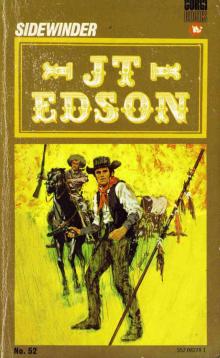 Sidewinder
Sidewinder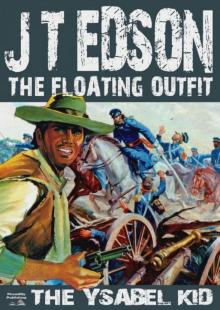 The Ysabel Kid
The Ysabel Kid Waco 6
Waco 6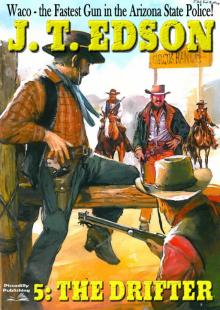 Waco 5
Waco 5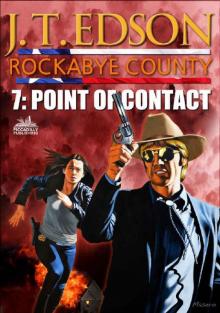 Point of Contact
Point of Contact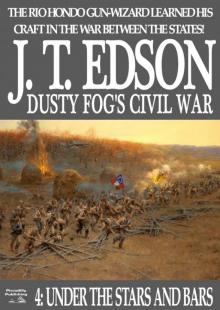 Under the Stars and Bars (A Dusty Fog Civil War Western Book 4)
Under the Stars and Bars (A Dusty Fog Civil War Western Book 4)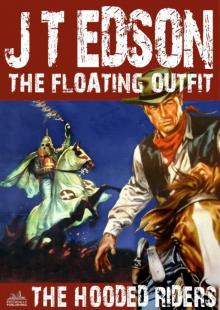 The Floating Outfit 9
The Floating Outfit 9 Under the Stars and Bars
Under the Stars and Bars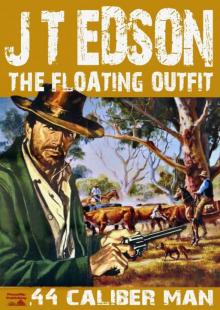 .44 Caliber Man
.44 Caliber Man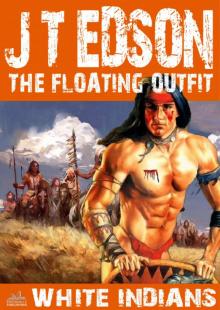 The Floating Outfit 17
The Floating Outfit 17 Ole Devil at San Jacinto (Old Devil Hardin Western Book 4)
Ole Devil at San Jacinto (Old Devil Hardin Western Book 4)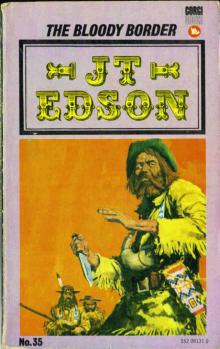 The Bloody Border
The Bloody Border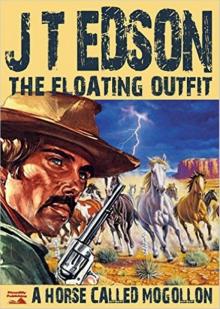 A Horse Called Mogollon (Floating Outfit Book 3)
A Horse Called Mogollon (Floating Outfit Book 3)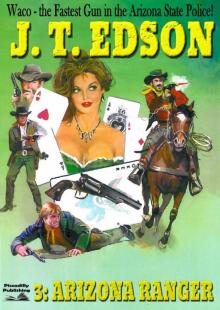 Waco 3
Waco 3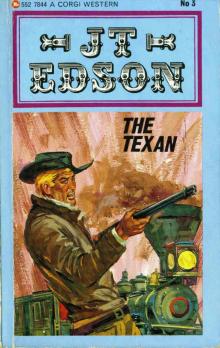 The Texan
The Texan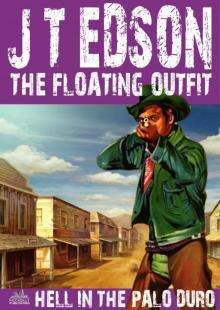 The Floating Outfit 35
The Floating Outfit 35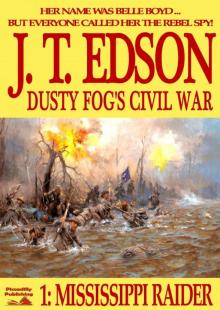 Mississippi Raider
Mississippi Raider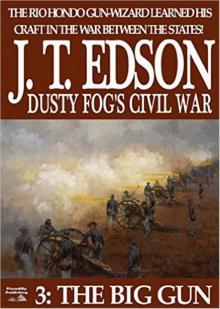 The Big Gun (Dusty Fog's Civil War Book 3)
The Big Gun (Dusty Fog's Civil War Book 3)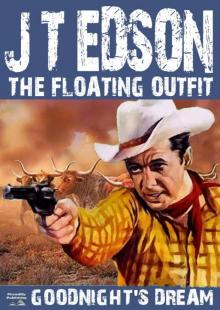 Goodnight's Dream (A Floating Outfit Western Book 4)
Goodnight's Dream (A Floating Outfit Western Book 4) Waco 4
Waco 4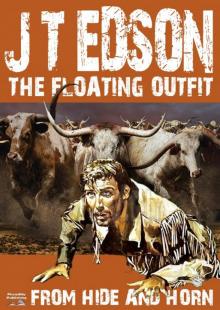 From Hide and Horn (A Floating Outfit Book Number 5)
From Hide and Horn (A Floating Outfit Book Number 5)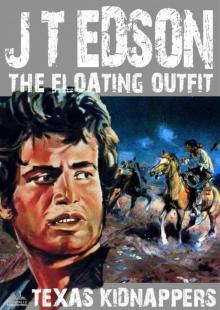 The Floating Outfit 18
The Floating Outfit 18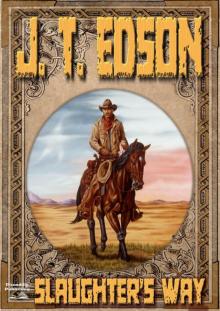 Slaughter's Way (A J.T. Edson Western)
Slaughter's Way (A J.T. Edson Western)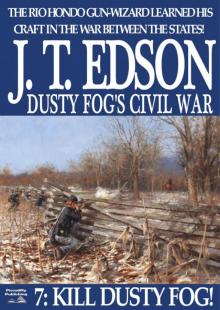 Dusty Fog's Civil War 7
Dusty Fog's Civil War 7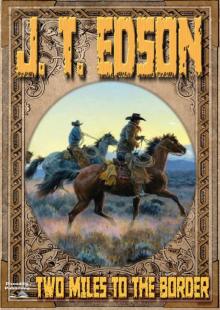 Two Miles to the Border (A J.T. Edson Western)
Two Miles to the Border (A J.T. Edson Western)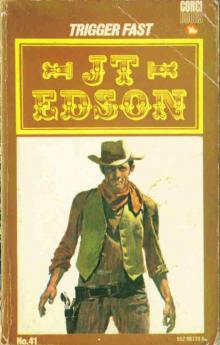 Trigger Fast
Trigger Fast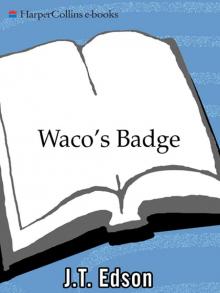 Waco's Badge
Waco's Badge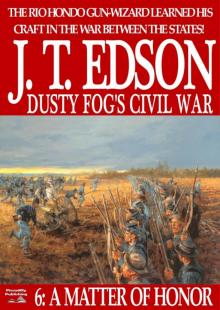 A Matter of Honor (Dusty Fog Civil War Book 6)
A Matter of Honor (Dusty Fog Civil War Book 6)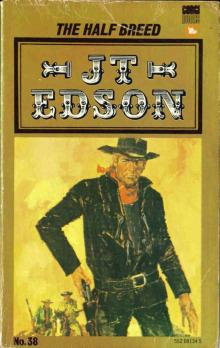 The Half Breed
The Half Breed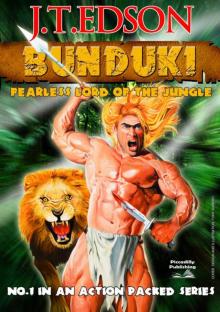 Bunduki (Bunduki Series Book One)
Bunduki (Bunduki Series Book One) Kill Dusty Fog
Kill Dusty Fog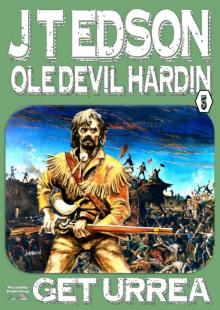 Get Urrea! (An Ole Devil Hardin Western Book 5)
Get Urrea! (An Ole Devil Hardin Western Book 5)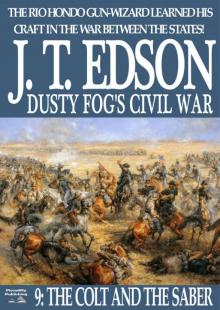 Dusty Fog's Civil War 9
Dusty Fog's Civil War 9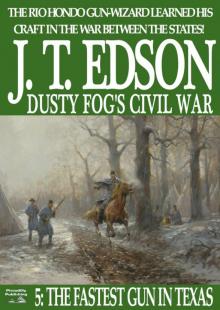 The Fastest Gun in Texas (A Dusty Fog Civil War Book 5)
The Fastest Gun in Texas (A Dusty Fog Civil War Book 5)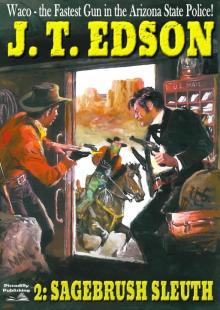 Sagebrush Sleuth (A Waco Western #2)
Sagebrush Sleuth (A Waco Western #2)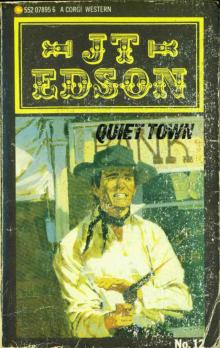 Quiet Town
Quiet Town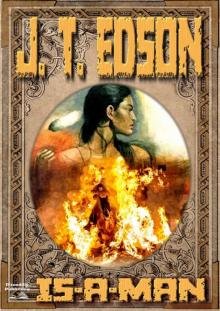 Is-A-Man (A J.T. Edson Standalone Western)
Is-A-Man (A J.T. Edson Standalone Western)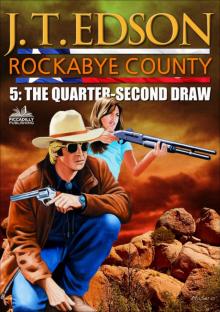 Rockabye County 5
Rockabye County 5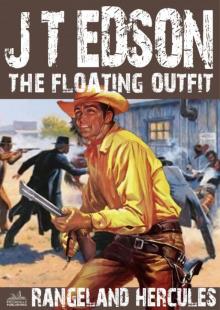 The Floating Outfit 14
The Floating Outfit 14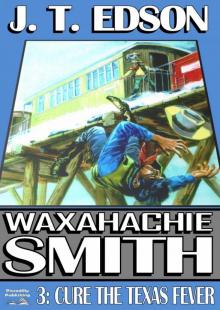 Cure the Texas Fever (A Waxahachie Smith Western--Book 3)
Cure the Texas Fever (A Waxahachie Smith Western--Book 3)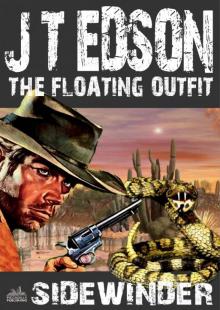 The Floating Outfit 13
The Floating Outfit 13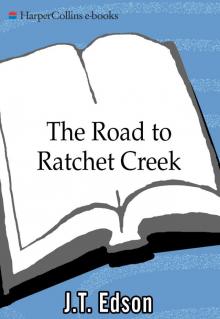 The Road to Ratchet Creek
The Road to Ratchet Creek